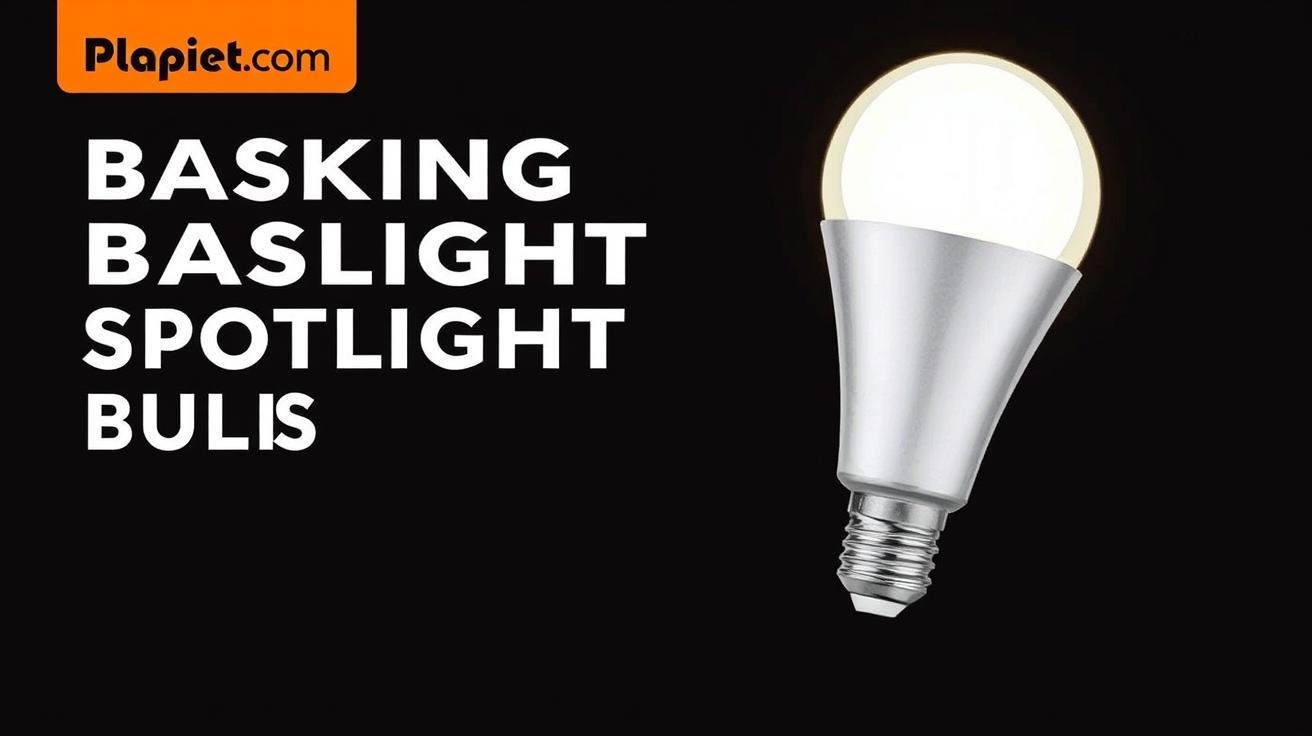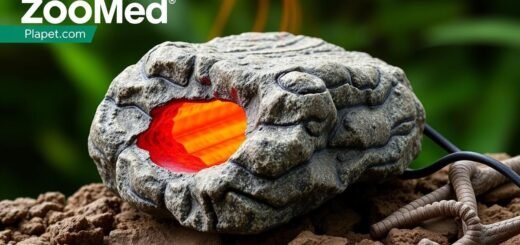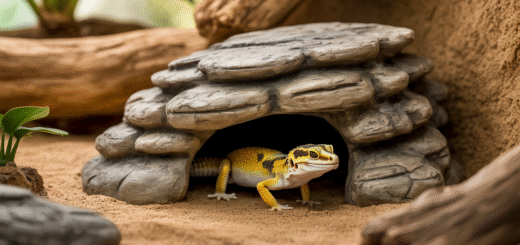Fluker’s 75W Basking Bulb Review: A Bright Choice?

Estimated reading time: 8 minutes
Key Takeaways
- Focused Heat Source: The Fluker’s Basking Spotlight Bulb is expertly designed to create a concentrated basking area, which is crucial for the proper thermoregulation of reptiles and amphibians.
- Essential UVA Provision: This bulb provides beneficial UVA rays, which are vital for stimulating natural behaviors, improving appetite, and promoting the overall psychological well-being of your pet.
- Enhanced Ambient Temperature: It effectively increases the overall ambient air temperature within the terrarium, helping you establish and maintain the necessary thermal gradient for your reptile’s health.
- Durable and Reliable: Built with a heavy-duty, long-lasting filament, this bulb is engineered for reliability, reducing the frequency of replacements and providing consistent performance.
- Versatile Application: The 75-watt output is perfect for a wide range of reptiles and is suitable for most standard-sized enclosures, making it a versatile choice for many hobbyists.
Table of Contents
- Introduction: The Heart of Your Reptile’s Habitat
- Our Verdict
- Key Features & Benefits In-Depth
- What We Liked
- Potential Drawbacks
- Who Is The Fluker’s 75W Basking Bulb For?
- Comparison to Alternatives
- Frequently Asked Questions
- Conclusion: A Bright Choice for Your Basking Buddy
Introduction: The Heart of Your Reptile’s Habitat
As dedicated reptile and amphibian keepers, we understand that creating the perfect habitat is both an art and a science. It’s more than just a glass box; it’s a carefully balanced ecosystem designed to mimic your pet’s natural environment. The single most critical element in that ecosystem is heat. Reptiles are ectothermic, meaning they rely on external sources to regulate their body temperature. Without proper heat, they can’t digest food, maintain their immune system, or even move effectively. This is where a high-quality heat source becomes non-negotiable. Today, we’re taking a deep dive into a staple product in the herpetology community: the Fluker’s Basking Spotlight Bulbs for Reptiles – 75 Watt. This review will explore whether this popular bulb truly delivers the focused heat, essential UVA rays, and reliability your cold-blooded companion needs to thrive.
- 75 Watt Red Heat Bulb helps you keep an eye on your pet during evening hours without disturbing the nocturnal routine
- Provides UVA rays that stimulate normal feeding behavior in reptiles.
- Provides heat for reptiles and amphibians through infrared light.
- Reptiles are ectothermic and depend on their environmental temperature to regulate their core body temperature.
Our Verdict
After extensive review and analysis, we can confidently say that the Fluker’s Basking Spotlight Bulbs for Reptiles – 75 Watt is a fantastic, workhorse product that delivers exceptional value. It reliably performs its core function: creating a warm, inviting basking spot that promotes healthy thermoregulation. While it may not have the all-in-one features of more expensive mercury vapor bulbs, its focused heat, UVA output, and durable design make it an essential component for the vast majority of reptile enclosures. For both new keepers setting up their first terrarium and experienced hobbyists needing a dependable daytime heat source, this bulb is a solid, budget-friendly, and highly effective choice.
Key Features & Benefits In-Depth
Let’s break down what makes this basking bulb a standout choice for reptiles and amphibians lovers. It’s not just about producing heat; it’s about producing the right kind of heat and light in a way that benefits your pet’s total health.
Basking Spotlight Bulb for a Focused Basking Area
The term ‘spotlight’ is key here. Unlike flood lamps that diffuse heat over a wide area, the Fluker’s bulb directs a concentrated beam of heat and light onto a specific spot. This is incredibly important because it allows you to create a ‘hot spot’ where your reptile can bask intensely, raising its core body temperature efficiently. This mimics how they would use a sun-drenched rock or branch in the wild. This focused basking area is the cornerstone of a proper thermal gradient, allowing your pet to move between the hot basking zone and cooler areas of the tank to precisely manage its temperature throughout the day.
Increases the Overall Ambient Air Temperature
While the focused spot is crucial, a basking bulb must also contribute to the habitat’s overall warmth. The Fluker’s 75-watt bulb does an excellent job of raising the ambient air temperature in the terrarium. As the bulb runs, the heat radiates outwards from the basking spot, warming the air and surfaces around it. This prevents the ‘cold side’ of the tank from becoming too cold, ensuring the thermal gradient is smooth and usable for your pet, not a drastic shift from hot to frigid. Maintaining this elevated ambient temperature is vital for respiratory health and overall metabolic function.
Provides Beneficial UVA Rays for the Psychological Well-being of Reptile
Many keepers focus solely on UVB for calcium synthesis, but UVA is just as important for a reptile’s quality of life. UVA light is part of the visible light spectrum for many reptiles and directly influences their behavior and psychological state. The beneficial UVA rays emitted by this bulb can help stimulate a more natural activity cycle, encourage a healthy appetite, and promote breeding behaviors. A reptile living under proper UVA lighting is often more active, alert, and vibrant, displaying a wider range of natural behaviors. It’s an invisible but powerful component of comprehensive reptile care.
Heavy-Duty Long-Lasting Filament
There’s nothing more frustrating than a bulb that burns out after just a few weeks. Fluker’s addresses this common complaint with a heavy-duty long-lasting filament. This robust construction is designed to withstand the constant on/off cycles of a thermostat and the high temperatures required for basking. This means more reliability, fewer emergency trips to the pet store, and better long-term value for your money. A durable filament ensures that your reptile’s essential heat source remains consistent and dependable, which is critical for their health.
What We Liked
- Excellent Heat Projection: The bulb creates a well-defined and potent basking spot, easily reaching appropriate temperatures for species like bearded dragons and monitors.
- Consistent Performance: It provides a stable heat output without significant fluctuations, which is crucial when paired with a quality thermostat for safety.
- Noticeable Impact on Animal Behavior: The inclusion of UVA rays often leads to more active and engaged pets, a clear sign of improved psychological well-being.
- Great Value for Price: Considering its performance and durability, this bulb offers one of the best price-to-performance ratios on the market for reptile heating.
- Wide Availability and Compatibility: It fits standard ceramic dome light fixtures, making it an easy and accessible upgrade or replacement for any setup.
Potential Drawbacks
- No UVB Output: This is not an all-in-one bulb. You must supplement it with a separate, high-quality UVB light source for any diurnal species that requires it for calcium metabolism.
- Lifespan Can Vary: While designed to be durable, like all incandescent bulbs, lifespan can be affected by power surges, frequent movement of the fixture while hot, or high humidity. Some users may experience shorter lifespans than others.
- Requires Careful Placement: Due to its focused beam, improper placement can create a basking spot that is too hot. It is essential to use a temperature gun or digital thermometer with a probe to verify surface temperatures.
Who Is The Fluker’s 75W Basking Bulb For?
This basking bulb is an outstanding choice for a broad spectrum of reptile keepers. Specifically, it’s perfect for all reptiles keepers who:
- Own enclosures in the 30 to 50-gallon range, such as the popular 40-gallon breeder tank.
- Care for common pet species like Bearded Dragons, Uromastyx, Blue-Tongued Skinks, smaller Monitor Lizards, Box Turtles, and many species of snakes.
- Are new to the hobby and want a reliable, straightforward, and affordable heating solution.
- Prefer a modular lighting setup, using separate bulbs for heat/UVA and UVB, which allows for more precise control and placement of each essential element.
- Are looking for a dependable replacement bulb that gets the job done without breaking the bank.
Comparison to Alternatives
How does the Fluker’s Basking Spotlight stack up against other heating options?
- Ceramic Heat Emitters (CHEs): CHEs produce heat but no light, making them excellent for 24/7 supplemental or nighttime heating. However, they provide no UVA or visible light, so they cannot be the sole heat source for a diurnal reptile. The Fluker’s bulb is superior for daytime basking as it provides both heat and beneficial light.
- Mercury Vapor Bulbs (MVBs): MVBs are the all-in-one powerhouses, providing heat, UVA, and UVB in a single bulb. They are a great solution but are significantly more expensive and cannot be used with a thermostat, making it harder to control the heat output precisely. The Fluker’s bulb offers more control and affordability, albeit requiring a separate UVB source.
- Halogen Bulbs: Halogen bulbs are another excellent option, often producing a brighter, more intense light and heat. They can be more energy-efficient, but are also typically more expensive than standard incandescent basking bulbs like the Fluker’s. The Fluker’s bulb provides a great balance of performance and cost.
Frequently Asked Questions About Fluker’s 75W Basking Bulb
How hot does a 75-watt basking bulb get?
A 75-watt basking bulb can typically reach surface temperatures of 100–110°F (38–43°C) when positioned about 8–12 inches above your reptile’s basking area. Exact temperatures depend on tank size, ambient room temperature, and bulb placement.
Is a 75-watt bulb good for a bearded dragon?
Yes! A 75W bulb is ideal for creating a hot basking spot for bearded dragons in a standard 40-gallon tank. It provides enough heat for proper thermoregulation without overheating the enclosure.
Is a 75-watt bulb okay for a leopard gecko?
For leopard geckos, a 75W basking bulb can work in medium to larger tanks, but since leopard geckos are crepuscular, you may prefer a lower wattage or use it sparingly to avoid excessive heat.
Do basking bulbs give off heat?
Absolutely. Basking bulbs are designed to emit infrared heat that warms a reptile’s body and raises the surrounding ambient temperature, helping reptiles digest food and stay healthy.
Is 150 watts too much for a bearded dragon?
A 150W bulb is generally too strong for a standard tank and can easily overheat your bearded dragon’s enclosure. Stick with 75W–100W depending on tank size and room temperature.
What watt basking bulb is best for a bearded dragon?
Most standard enclosures do best with 75–100 watts, creating a basking spot around 100–110°F. Always monitor with a thermometer to ensure safety.
How bright is a 75-watt bulb?
A 75W basking bulb produces a strong, focused light that mimics natural sunlight, offering both heat and UVA rays to encourage natural behaviors.
Can a 100W bulb heat a room?
A single 100W bulb emits noticeable warmth but is not enough to heat an entire room. It’s primarily meant to heat a specific basking area inside a terrarium.
How many watts is too much for a bearded dragon?
Anything above 100–125 watts can overheat a standard 40–50 gallon enclosure, posing a risk to your bearded dragon. Always measure temperatures carefully.
How many hours a day does a bearded dragon need UVB light?
Bearded dragons need about 10–12 hours of UVB exposure during the day to synthesize vitamin D3 and support calcium metabolism.
What is the basking temperature for a bearded dragon?
The optimal basking temperature is 100–110°F (38–43°C) for adults, and slightly warmer (105–110°F) for juveniles.
Is 5.0 or 10.0 UVB better for leopard geckos?
For leopard geckos, a 5.0 UVB bulb is usually sufficient due to their low daytime activity, while 10.0 is better suited for active, diurnal species like bearded dragons.
What heat lamp should I buy for my bearded dragon?
Choose a 75–100W incandescent or halogen basking bulb that provides both heat and UVA rays. Pair it with a separate UVB bulb for complete reptile care.
Is 100W okay for a leopard gecko?
100W can be used cautiously, but monitor the temperature carefully. Many leopard gecko enclosures do better with lower wattage bulbs or ceramic heat emitters.
How hot is a 75 watt basking bulb?
When correctly placed, it produces a basking spot of 100–110°F, perfect for most medium-sized reptile tanks.
Should I leave the basking light on at night?
No. Reptiles need a day/night cycle. Turn off the basking bulb at night or use a ceramic heat emitter for nighttime warmth without light disruption.
Is a basking light UVB or UVA?
A 75W Fluker’s bulb provides UVA rays along with heat, but does not provide UVB. Always supplement with a dedicated UVB light for diurnal reptiles.
What is equivalent to a 75 watt bulb?
A standard 75W incandescent bulb is roughly equivalent to 650–700 lumens for visible light and is designed to produce concentrated heat for reptile basking.
How much work does a 75 watt bulb do in 1 minute?
A 75W bulb consumes 75 joules of energy per second, so in 1 minute it uses 4,500 joules. Most of this energy is converted into heat and light.
What happens if you put a 75 watt bulb in a 60W socket?
It won’t fit safely, and forcing it can damage the fixture or cause a fire hazard. Always match the bulb to the recommended socket wattage.
How much brighter is 75W vs 60W?
A 75W bulb is roughly 20–25% brighter and hotter than a 60W bulb, giving more effective heat for your reptile’s basking area.
What happens if you put too high a watt bulb?
Using too high a watt bulb can overheat your reptile, cause burns, or damage the terrarium. Always use a thermometer to monitor surface temperatures.
What does type C bulb mean?
Type C refers to the shape and base of the bulb, usually standard screw-in fittings compatible with ceramic dome fixtures. Make sure your fixture matches the bulb type.
How much energy does a 100 watt bulb use for 10 hours?
A 100W bulb consumes 1 kWh of electricity if used for 10 hours, which is roughly $0.15–$0.20 depending on local electricity rates.
How much does a 75W bulb cost to run?
A 75W bulb running 10 hours per day uses 0.75 kWh, costing approximately $0.10–$0.15 per day, making it an affordable heat source for reptiles.
How much electricity does 75 watts use?
A 75W bulb uses 0.075 kilowatts per hour (kWh). Multiply by daily hours to calculate total energy consumption.
Conclusion: A Bright Choice for Your Basking Buddy
The Fluker’s Basking Spotlight Bulbs for Reptiles – 75 Watt stands out as a reliable, effective, and affordable solution for one of the most fundamental aspects of reptile care. It excels at its primary job: creating a focused, warm basking area that allows for natural thermoregulation. The added benefits of ambient heat contribution and essential UVA radiation make it a well-rounded product that supports both the physical and psychological health of your pet. While you will need to supplement it with a separate UVB source, its performance, durability, and unbeatable price point make it a must-have for keepers who want to provide the best for their animals without overcomplicating their setup.
If you are setting up a new habitat or simply need a dependable replacement for your current basking bulb, you can’t go wrong with this choice. It’s a foundational piece of equipment that delivers on its promises, ensuring your beloved reptile has the warmth and light it needs to live a long, healthy, and active life.
Ready to give your reptile the perfect basking spot? Click the link below to check the latest price and purchase the Fluker’s 75 Watt Basking Spotlight Bulb on Amazon!




